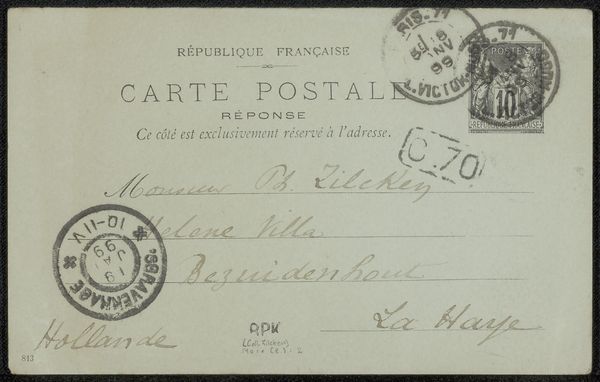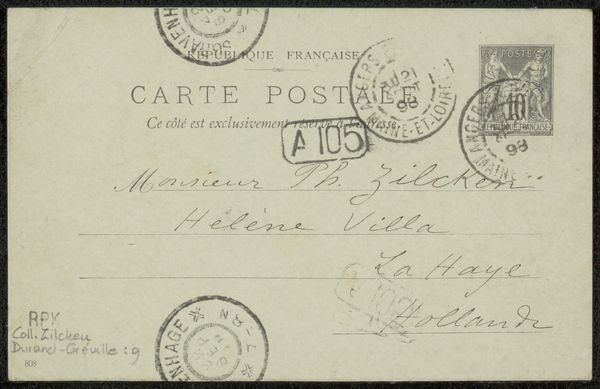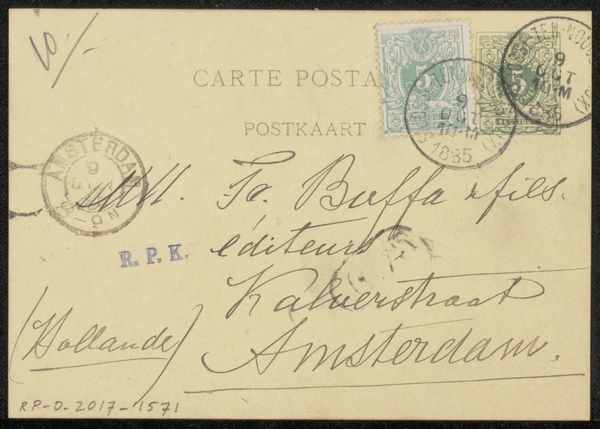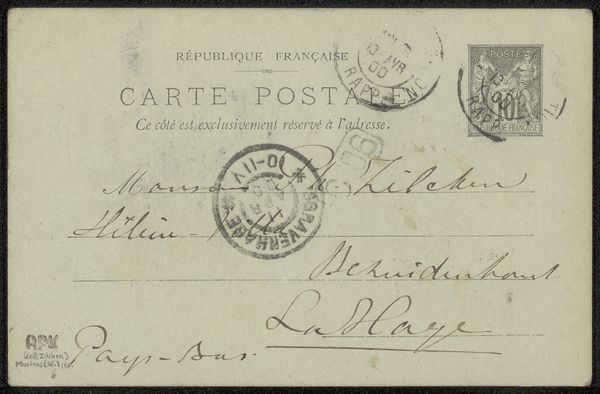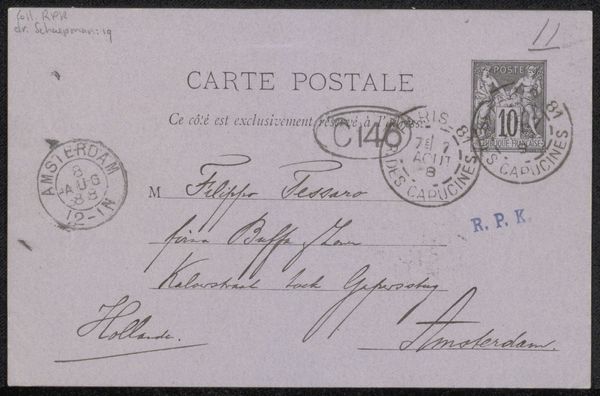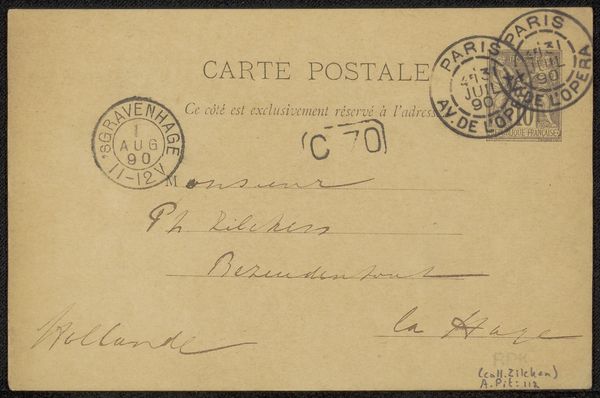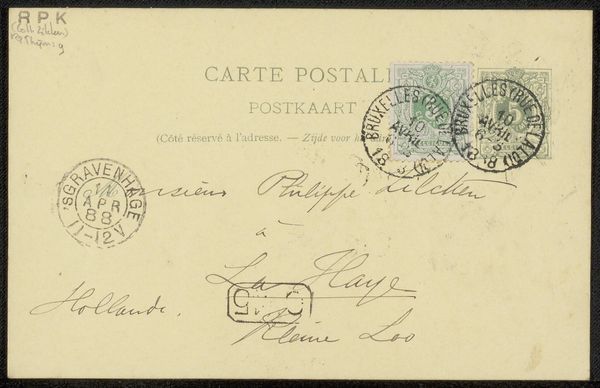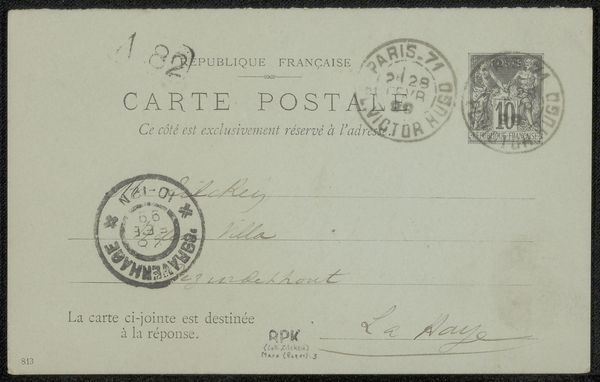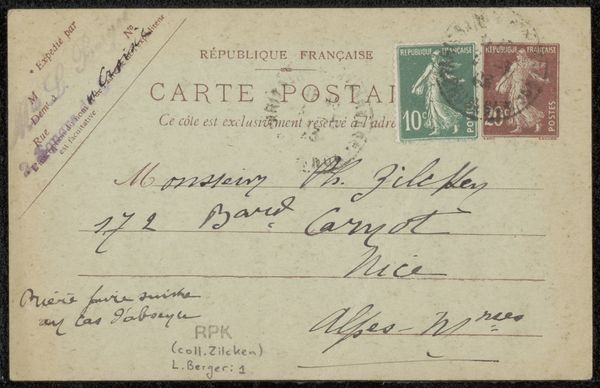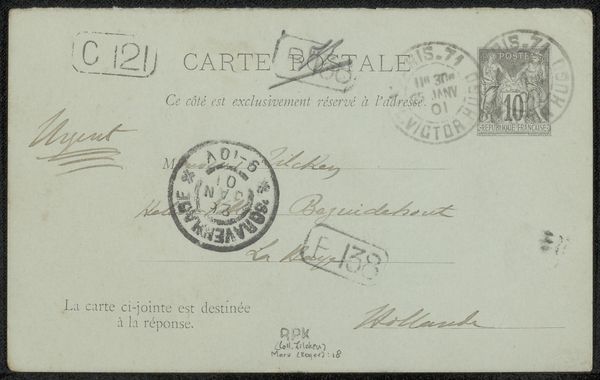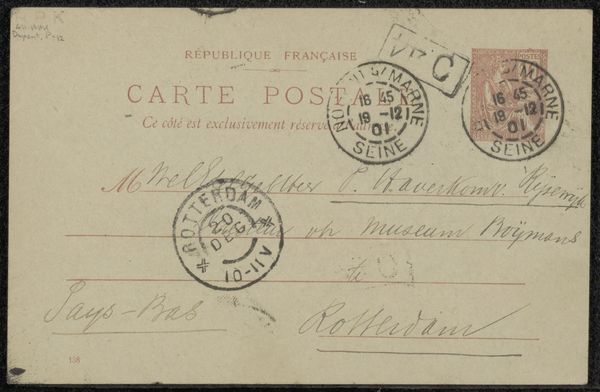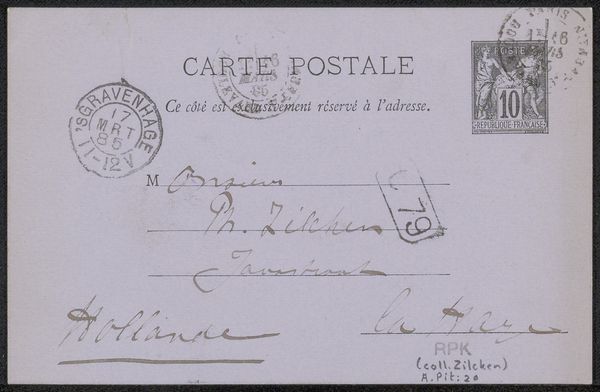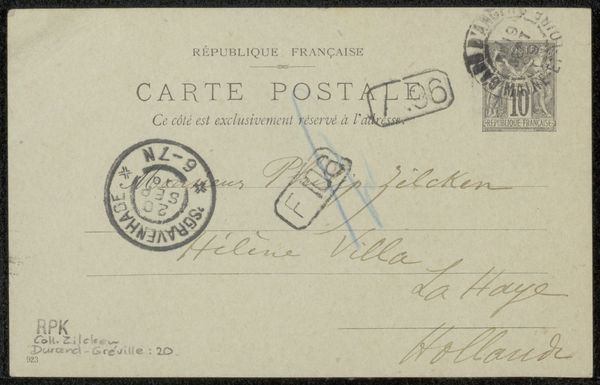
print, paper, photography
# print
#
paper
#
photography
Copyright: Rijks Museum: Open Domain
Editor: Here we have Émile Durand-Gréville's "Briefkaart aan Philip Zilcken," likely from 1899, a print on paper utilizing photography. It's really fascinating to see this intimate, personal piece. What can you tell me about how postcards functioned symbolically during this time? Curator: Consider the seemingly mundane nature of a postcard – its ephemerality. Yet, it carried significant weight. Notice the stamp, a symbolic representation of the French Republic, communicating its values. The handwriting, the postmarks – they all construct a narrative beyond the written word, evoking a sense of a specific moment frozen in time, and suggesting deeper human connections, and political ones, too. Editor: So, the images and stamps themselves communicated values, acting almost as little propaganda pieces? Curator: Precisely. They are artifacts imbued with symbolic weight, reflecting national identity and ideals. And the act of sending a postcard? It's a deliberate act of connection, loaded with cultural meaning. Think of the Roman god Mercury, the messenger. What meanings did travel and communication technologies have during the fin-de-siècle, do you think? Editor: It speaks to a specific cultural moment—expanding communication, yet maintaining personal touches with handwritten messages. I guess I didn’t think of it as being so rich in symbolism. Curator: Indeed. The postcard, at first glance simple, reveals a network of symbolic meaning related to personal connection, nationalism, and progress. A reminder that even everyday images possess hidden depths.
Comments
No comments
Be the first to comment and join the conversation on the ultimate creative platform.
